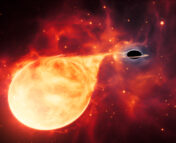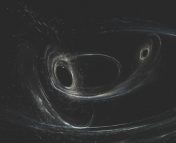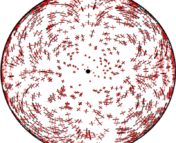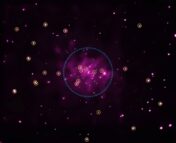Title: A Sun-like star orbiting a black hole
Authors: Kareem El-Badry, Hans-Walter Rix, Eliot Quataert, et al.
First Author’s Institution: Center for Astrophysics | Harvard & Smithsonian
Status: Accepted for publication in MNRAS (Closed Access), also available on arXiv (https://arxiv.org/abs/2209.06833)
Over the last few years, there have been several purported detections of dormant stellar mass black holes. Rather than burning brightly like their wide-awake X-ray binary siblings, these comatose compact objects are often identified by their gravitational effects on companion stars. For stellar-mass black holes, these should produce radial velocity signals similar to other spectroscopic binaries. Because of this, sometimes, when following up a stellar-mass black hole candidate, the system is clearly seen to be a stellar binary. When these systems have been demoted from black hole to boring star, there’s a good chance today’s first author, Kareem El-Badry, was responsible.
From Black Hole Destroyer to Black Hole Discoverer
Recently, El-Badry was part of an international team to identify the first extragalactic dormant stellar-mass black hole in the Large Magellanic Cloud. Naturally, the next step for El-Badry and his team was to find one closer to home, this time only 480 parsecs away! By using ultraprecise astrometric data and spectroscopic data from ESA’s Gaia mission, as well as some clever data analysis, they were able to identify a number of candidate black hole binaries.

A normal binary star’s photocenter (“center of brightness”) will move quite differently than a black hole/stellar binary. In the first case, both stars orbit their common barycenter (center of mass), and the photocenter of the system should roughly trace the barycenter. For the latter, a dormant black hole gives off no (or very little) light, and the photocenter of the system will exactly be the position of the stellar companion. By searching Gaia sources for abnormally large photocenter motion, the team found one good candidate system, Gaia BH1.
Data Synthesis
Gaia BH1 consists of a bright Solar twin (with temperature, mass, and radius nearly identical to the Sun) and a dark, more massive binary companion. Judging from the ellipse traced by the star’s photocenter, the binary mass ratio is far too large for the companion to also be a main-sequence star. In order to precisely measure the companion mass, the team conducted radial velocity (RV) followup observations. By fitting the various RV and astrometric datasets independently and in combination, the team could more strongly constrain the nature of the binary.
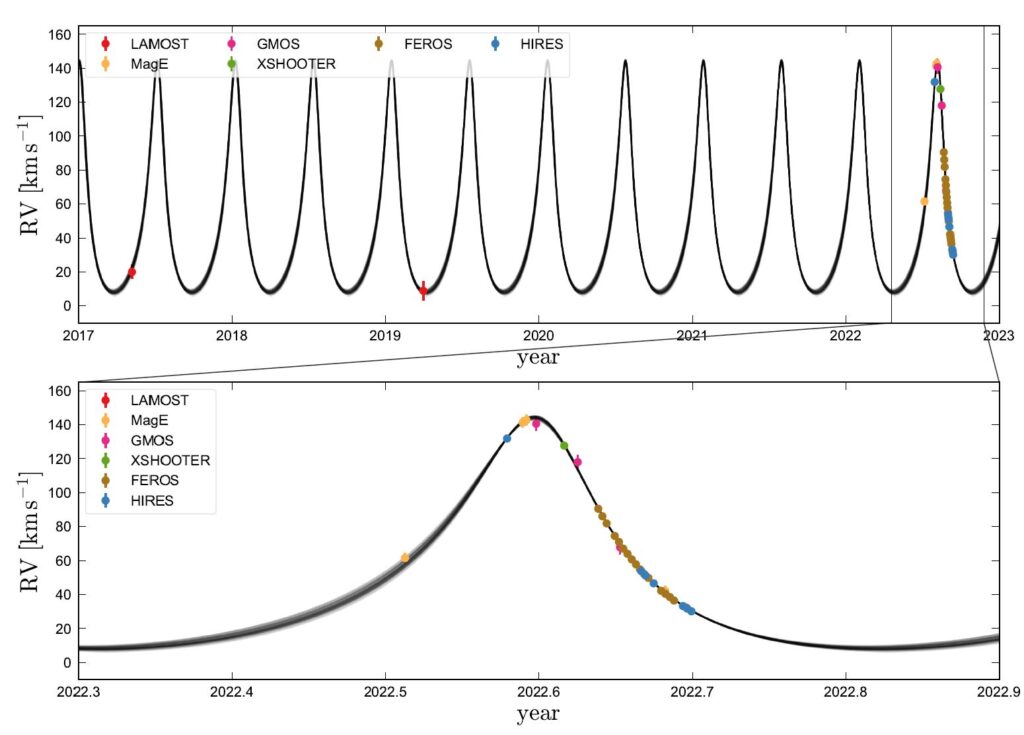
There were two archival RVs of the system, but unluckily for our intrepid authors, both were taken near the system’s minimum RV signal, meaning that they needed to take more RV data to cover the rest of the system’s orbit. After combining RVs from five separate instruments with the Gaia astrometric solution, they found the dark component to have a mass of 9.8 solar masses, confirming it as a stellar-mass object. However, just the RV data alone can’t determine whether the dark companion is a black hole.
Gaia BH1 doesn’t yet show evidence of accretion, but the authors also estimated the system’s luminosity in X-ray and radio waves to see if current or future observations could detect this. Gaia BH1 must be accreting the stellar wind from the G star component. However, this is a tiny amount of matter to accrete, so any flux from the inefficient accretion disk would not be visible by the major X-ray or radio observatories in the near future.
How to build a black hole binary
So, you think you’ve found a dormant stellar mass black hole, but how does such a system get here? A ten solar mass black hole must have formed from a star several times larger, between 30 and 50 solar masses. Large stars like this expand into supergiants at the end of their lives, and for typical stellar evolution, the baby G star would have had to survive a so-called common-envelope stage, where the giant star engulfs it for a period of time before becoming a black hole. After doing detailed modeling of the history of the system, the authors find that the BH progenitor should have gradually lost mass due to stellar wind, which widened the binary’s orbit as it expanded and eventually engulfed the G star companion. After the BH progenitor undergoes a core collapse supernova, it becomes the currently observed black hole, and knocks the G star out into the currently observed eccentric orbit. Still, more work is needed to truly nail down the evolution of the progenitor into the current system.
There’s a second possibility, however. If Gaia BH1 formed from a hierarchical triple, instead of a stellar binary, the central dark component could be a tight binary of at least one stellar mass black hole. This may seem unlikely, but it provides a testable hypothesis. If the G star is orbiting a tight binary, the motion of the binary will perturb the star’s orbit enough to cause a gradual precession, which would be visible in long term (35-350 years) RV observations. Either way, there’s still at least one dormant stellar mass black hole in the system.
Searching for sleeping Black Holes
When you find one cosmic object, it’s likely you’ll find more. The criteria used to find Gaia BH1 were fairly conservative, so widening the search should yield more candidate systems. In addition to the epochal data in the upcoming fourth Gaia data release (something nearly all astronomers have been clamoring for), the improved astrometric precision should let astronomers find dozens of such dormant black holes.
It’s unlikely any of these systems will be as exciting as Gaia BH1, though. It’s the closest known black hole to earth, it has a weird evolutionary history, and it’s easily observable with current observatories. Keep an eye on the arXiv to find out if this dormant black hole wakes up soon!
Astrobite edited by: Konstantin Gerbig
Featured image credit: NASA, Celestial Seasonings

